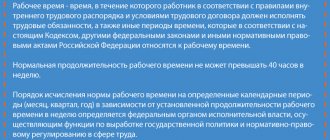Investigation objectives
Investigating an occupational disease is not an easy task, so it is better to prevent this trouble.
But if everything happened, then the investigation involves solving the following problems:
- Experts are establishing the circumstances of the incident.
- Investigation of the scene of the incident.
- Who is guilty of violating regulations governing the maintenance of the workplace in accordance with sanitary standards.
- How it happened.
- Accurately determine the conditions for the occurrence of pathology.
- If necessary, take measurements for the presence of harmful substances in the air near the workplace.
- 7. Assess sanitary norms and rules, as well as establish the cause of the disease.
As a result, it is necessary to take measures to prevent an unpleasant event in the future.
The establishment of an occupational disease is indefinite - can the indefiniteness be lifted?
The rules for determining the period of loss of ability to work are contained in the annex to the decree of the Government of the Russian Federation “On approval of the Rules for determining the degree of loss of professional ability to work...” dated October 16, 2000 No. 789. According to clause 27 of Section 3, the degree of injuries received can be established indefinitely. The ITU (medical and social examination) commission makes this conclusion if irreversible consequences of the disease are diagnosed and professional abilities are lost forever.
The assessment is carried out based on the results of the examination and the criteria listed in the order of the Ministry of Labor of the Russian Federation “On approval of temporary criteria...” dated July 18, 2001 No. 56. The examination procedure is strictly regulated and includes the following stages:
- Issuance of a referral by the Federal Social Insurance Fund of the Russian Federation.
- Visual inspection.
- Study of medical documents, occupational disease reports, investigation materials.
- Carrying out additional examination (if necessary).
- Drawing up a conclusion and protocol.
Occupational disease is one of the grounds for assigning a disability to a citizen (clause 14 of the Decree of the Government of the Russian Federation “On the procedure and conditions for recognizing a person as disabled” dated February 20, 2006 No. 95). If during the next examination the commission comes to the conclusion that working capacity has been restored, the conclusion will be changed.
Disability can be assigned indefinitely within the framework of the government decree “On amendments to the rules for recognizing a person as disabled” dated 04/07/2008 No. 247. The conditions for this are:
- the presence of a disease specified in the annex to the regulatory act;
- confirmation of disability based on the results of 4 annual examinations;
- data on the complete completion and failure of treatment and rehabilitation programs.
The decision of the ITU commission can be appealed to a higher authority or court.
Where does the investigation begin?
The investigation is carried out after the diagnosis has been established and the pathology has been recorded. Everything is carried out in a specialized clinic. The results are sent to sanitary services and the employer.
Supervisory authorities are given one day for the examination. The prepared report is forwarded to the clinic to which the employee is assigned and to the place of work. If the manager does not agree with the conclusion, he draws up a statement and attaches it to the documents.
A commission is created to conduct an investigation into an occupational disease. Documents are drawn up showing the conditions under which the employee worked. If control measurements are required, the employer must pay for them.
List of commission members:
- Representative of the head of Rospotrebnadzor.
- Representative from the employer.
- Representative from a health care organization.
- Trade union leader.
- OT representative.
Since the incident that occurred at work is classified as an occupational disease, medical specialists should be involved in the investigation. The commission is headed by the chief physician from Rospotrebnadzor.
The sequence of events during the investigation depends on the type of pathology.
There is no certificate of occupational disease - what to do?
Among the mandatory attachments to the application for assignment of payments, Art. 15 of Law 125-FZ names an act drawn up based on the results of an investigation organized by the employer. The basis for the formation of the commission is a medical report. If the management of the enterprise avoids carrying out the procedure, the issue may be referred to the court.
Cases of this kind are considered within the framework of Chapter 28 of the Code of Civil Procedure of the Russian Federation with the involvement of employees of the occupational pathology center or medical institution. Traditionally, the defendants are the territorial bodies of the Federal Social Insurance Fund of the Russian Federation and the employer. The decision is made based on the results of an independent examination, guided by established practice. An example of the practical application of this legal mechanism is the appeal ruling of the Ulyanovsk Regional Court on a dispute dated 08/04/2015 No. 33-3232/2015.
Investigation algorithm
If, based on the results of the investigation, an occupational disease is established, the employer must be informed no more than ten days in advance.
Action plan:
- The commission is created by an administrative document. The chief physician from Rospotrebnadzor is appointed as the chairman. The members of the commission will be: an occupational safety engineer, a representative from a medical institution, a trade union representative.
- The commission begins its work. First you need to interview the employee and employer about what happened.
- Then they interview eyewitnesses - co-workers of the employee who received the disease.
- The commission considers the following documents: characteristics of the labor process; certificates of completed medical examinations; copies from logs of occupational safety briefings; explanatory notes from the employee; opinions from specialists; copies from personal cards for issuing special clothing; extracts from orders of higher authorities.
What is an occupational disease
According to Federal Law No. 125 of June 24, 1998, an occupational disease is a disease the occurrence of which is provoked by harmful working conditions. Occupational diseases are:
- Spicy. They are formed as a result of a short-term influence on the employee’s body of harmful (dangerous) production factors (poisoning, intoxication with chemical compounds, gases).
- Chronic. Formed due to prolonged exposure to harmful factors. One of the signs of such a disease is its protracted nature. These include encephalopathy and disorders of the autonomic nervous system, tuberculosis and lung cancer, decreased hearing and vision, problems with joints, bones, and skin.
In the acute form of the disease, it is easier to prove its connection with harmful production factors. If there is a release of harmful substances at an enterprise and an employee is poisoned, the cause-and-effect relationship is obvious. It is a little more difficult to prove a similar connection in a chronic disease.
Which specialist diagnoses a chronic disease?
If there is a suspicion of a chronic occupational disease, then information about the fact of the disease is sent from the medical institution to Rospotrebnadzor. This action takes 3 days.
Next, representatives of Rospotrebnadzor prepare information on the sanitary and hygienic assessment of conditions, after which the information is submitted to the clinic from which the employee was sent. No more than two weeks are allotted for this.
Based on the results of the examination, information is submitted to the occupational pathology center. To do this, you need to prepare a package of documents:
- An extract from the medical card.
- Results of completed medical examinations: primary and periodic.
- Working conditions in the workplace established during the investigation.
- A copy of the employee's work record book.
If an occupational pathologist confirms the fact of an occupational disease, then the notification is forwarded to the Social Insurance Fund, Rospotrebnadzor, a medical institution and the Social Insurance Fund.
If an occupational disease is established, then the conclusion is issued to the employee, the Social Insurance Fund and the healthcare institution.
Investigation of occupational diseases
Decree of the Government of the Russian Federation of December 15, 2000 No. 967 “On approval of the regulations on the investigation and recording of occupational diseases” (hereinafter Regulation No. 967) approved the Procedure for establishing the presence of an occupational disease, the Procedure for considering the circumstances and causes of the occurrence of an occupational disease, as well as the Procedure for drawing up an act on case of occupational disease.
In accordance with paragraph 2 of Regulation No. 967, acute and chronic occupational diseases (poisonings) are subject to investigation and recording, the occurrence of which in workers and other persons is due to the influence of average production factors when they perform work duties or production activities on the instructions of an organization or individual entrepreneur.
Employees based on paragraph 3 of Regulation No. 967 include:
- citizens performing work under an employment agreement (contract) or under a civil law contract;
- students of educational institutions of higher and secondary vocational education, as well as students of educational institutions of secondary, primary vocational education and educational institutions of basic general education, working under an employment agreement (contract) during internship in organizations;
- persons sentenced to imprisonment and forced to work;
- other persons participating in the production activities of an organization or individual entrepreneur.
Clause 4 of Regulation No. 967 provides definitions of occupational and chronic diseases. An acute occupational disease
(poisoning) is understood as a disease that is, as a rule, the result of a single (for no more than one working day, one work shift) exposure of an employee to a harmful production factor (factors), resulting in temporary or permanent loss of professional ability to work.








